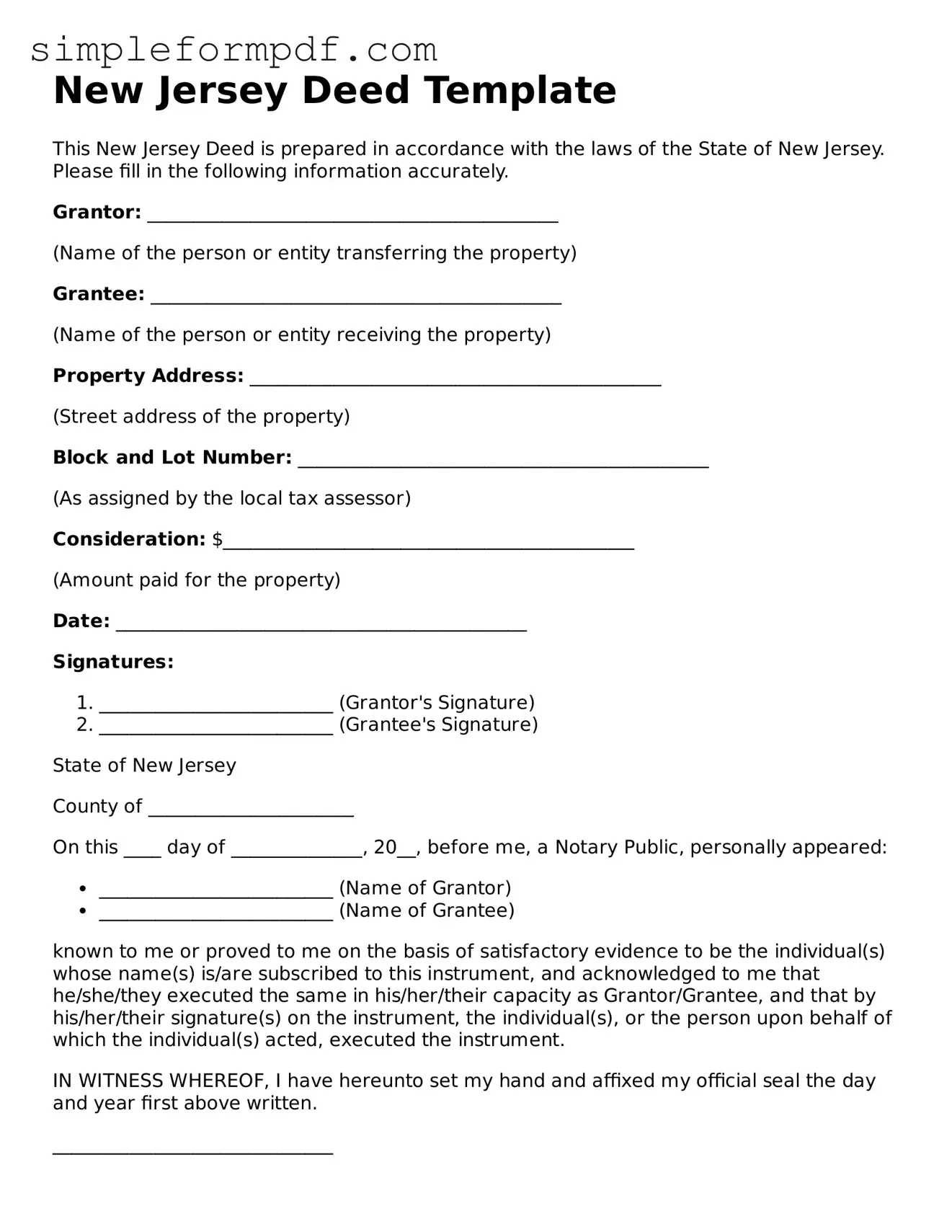New Jersey Deed Template
This New Jersey Deed is prepared in accordance with the laws of the State of New Jersey. Please fill in the following information accurately.
Grantor: ____________________________________________
(Name of the person or entity transferring the property)
Grantee: ____________________________________________
(Name of the person or entity receiving the property)
Property Address: ____________________________________________
(Street address of the property)
Block and Lot Number: ____________________________________________
(As assigned by the local tax assessor)
Consideration: $____________________________________________
(Amount paid for the property)
Date: ____________________________________________
Signatures:
- _________________________ (Grantor's Signature)
- _________________________ (Grantee's Signature)
State of New Jersey
County of ______________________
On this ____ day of ______________, 20__, before me, a Notary Public, personally appeared:
- _________________________ (Name of Grantor)
- _________________________ (Name of Grantee)
known to me or proved to me on the basis of satisfactory evidence to be the individual(s) whose name(s) is/are subscribed to this instrument, and acknowledged to me that he/she/they executed the same in his/her/their capacity as Grantor/Grantee, and that by his/her/their signature(s) on the instrument, the individual(s), or the person upon behalf of which the individual(s) acted, executed the instrument.
IN WITNESS WHEREOF, I have hereunto set my hand and affixed my official seal the day and year first above written.
______________________________
Notary Public
